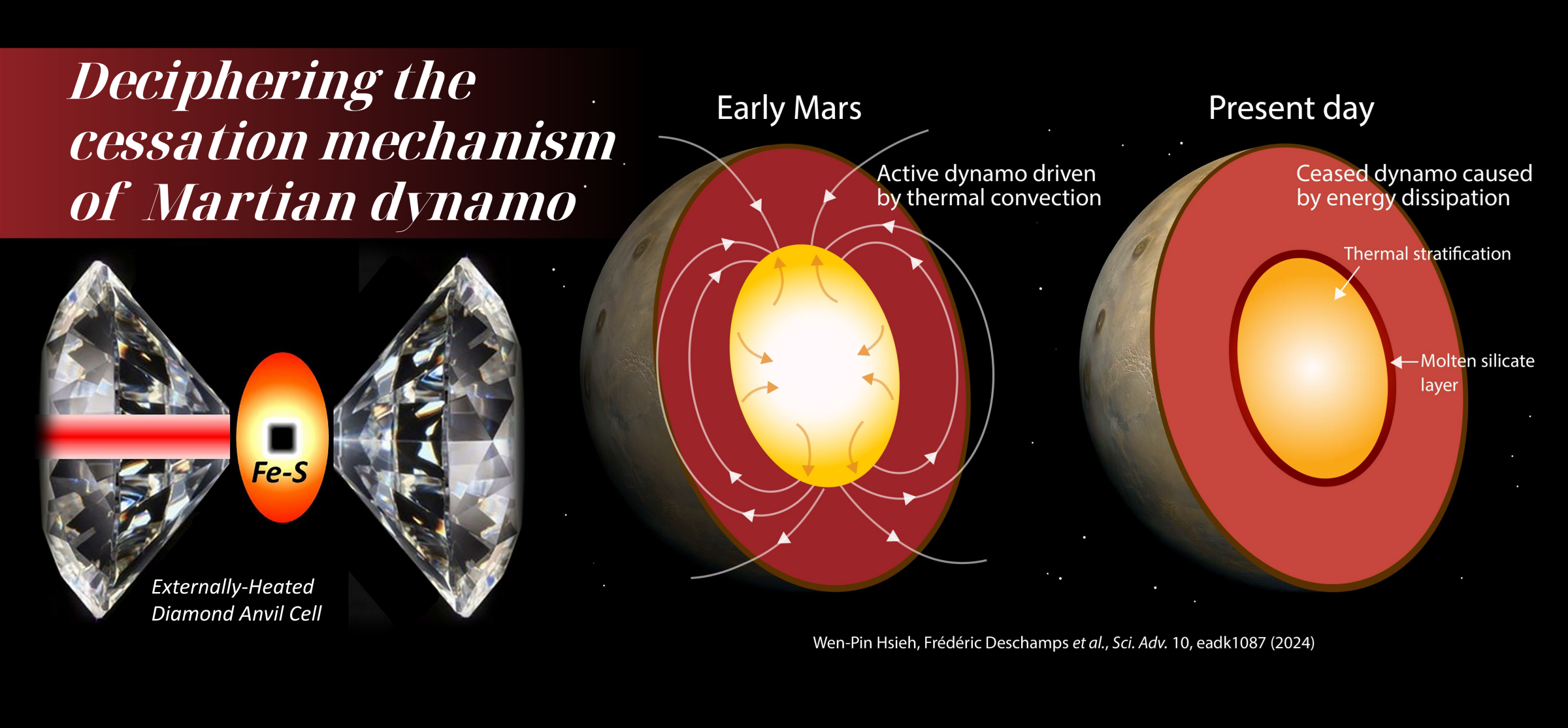Earth’s long-term, stable magnetic field is critical for being a habitable planet. Mars had a global magnetic field at ~4.3 billion years ago, which, however, only lasted for ~0.7 billion years. To decipher the origin of such short-lived dynamo, recently an international research team led by Dr. Wen-Pin Hsieh of IES has precisely measured the thermal conductivity of iron-sulfur alloys at Martian core’s high pressure-temperature conditions. His team demonstrated that Martian core is much more thermally conductive than previously inferred. Combined with numerical modeling on Martian core’s thermal evolution, they further found that such high thermal conduction with efficient cooling diminishes thermal convection, significantly contributing to the cessation of Martian dynamo. As the seismic data from Insight mission showed important advances in the internal structure of Mars, the present exciting findings further provide crucial insights to the thermal and magnetic evolution, energy budget, and dynamics of Mars. The international team includes Drs. Wen-Pin Hsieh and Frédéric Deschamps of IES, etc. These results are recently published in Science Advances.
Hsieh, W.-P., Deschamps, F., Tsao, Y.-C., Yoshino, T., & Lin, J.-F. (2024). A thermally conductive Martian core and implications for its dynamo cessation. Science Advances, 10(12), eadk1087.
Article link: https://www.science.org/doi/10.1126/sciadv.adk1087
Post by Academia Sinica: https://www.sinica.edu.tw/en/News_Content/36/2528
